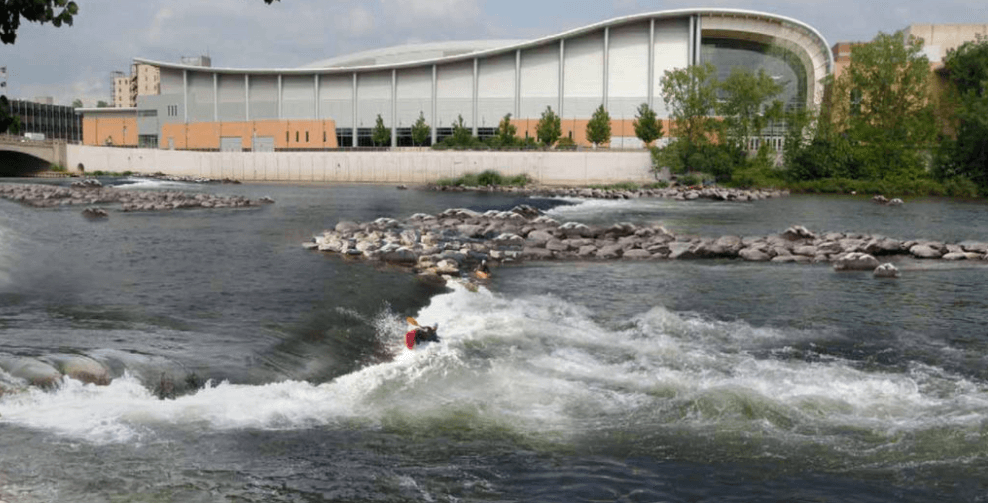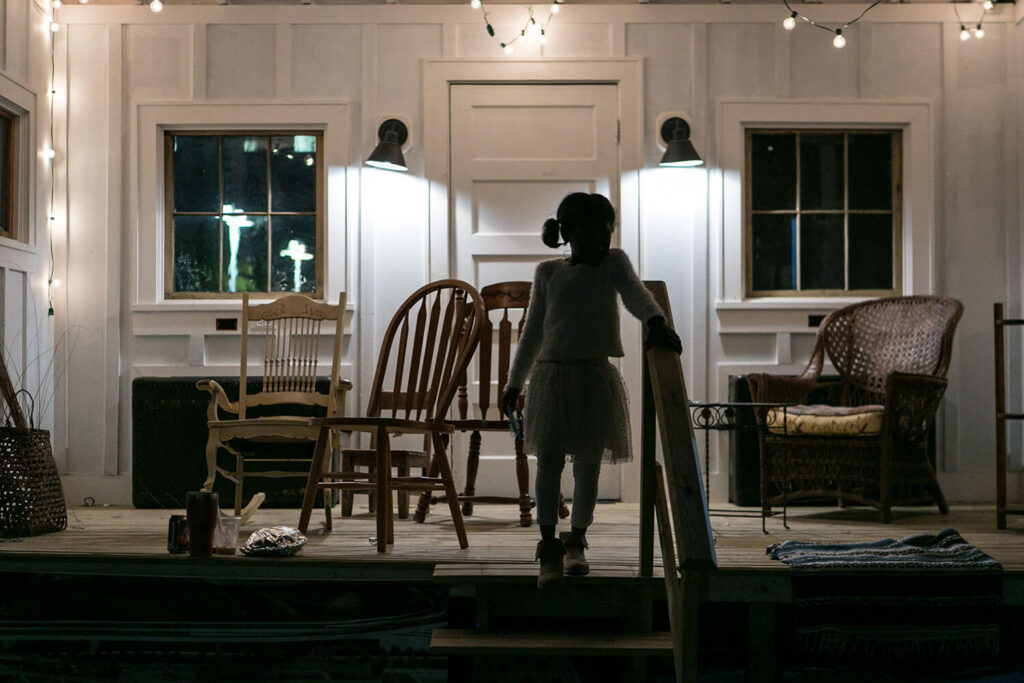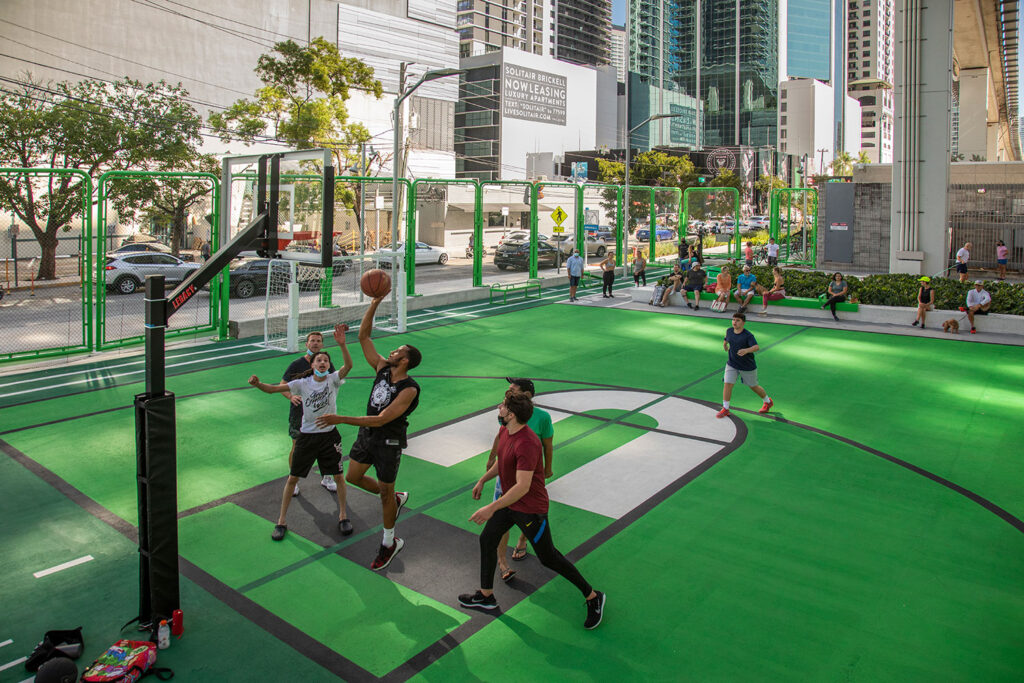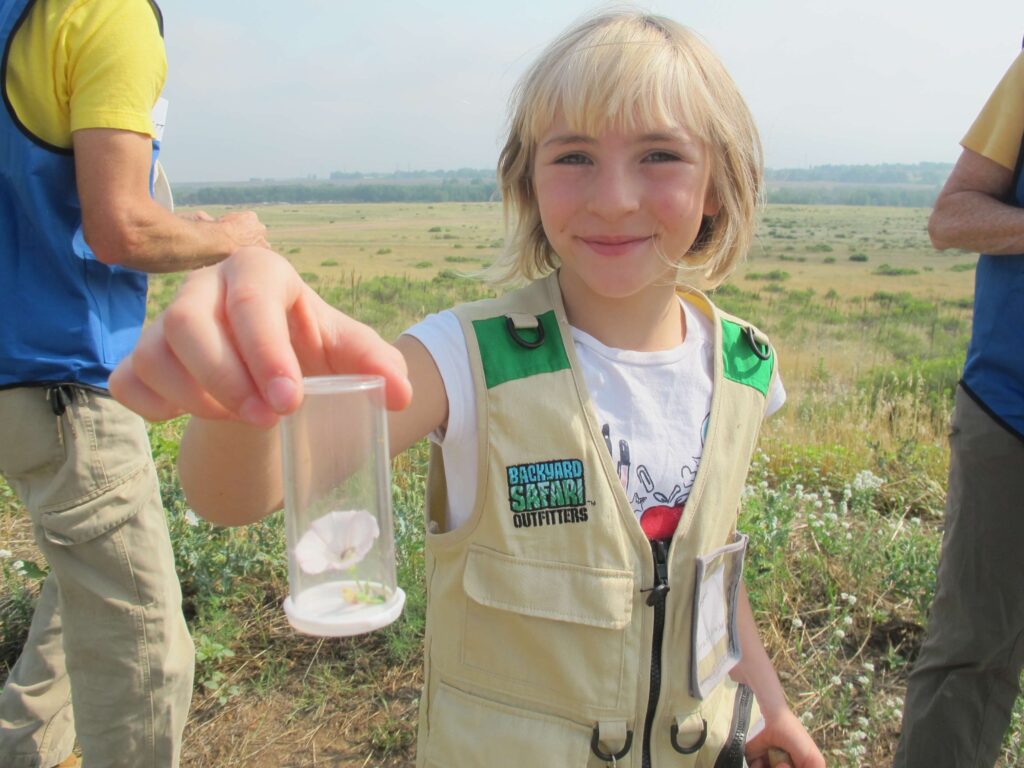Would you like to showcase your own work to embed equity in your infrastructure reuse project?
Aligning with Longtime Stakeholders of a River

Whitewater Intervention. Credit: Downtown Grand Rapids, Inc.
The Grand River Corridor Revitalization Initiative (GRCRI) is a project designed to restore both the waterway and the waterfront of Michigan’s longest river. Flowing through Kent County and the city of Grand Rapids, this initiative includes the land of several Indigenous tribes. It also represents a unique opportunity to build more vibrant and diverse public spaces. Therefore aligning with longtime stakeholders of the river, including the tribes along this water corridor, is of critical importance.
GRCRI embraces community partnerships, programming, and trust-building initiatives as key drivers of this vision. For example, one of the area’s indigenous communities, the Grand River Bands of Ottawa Indians, have long been long left out by public institutions. GRCRI acknowledged their unique stake and history with the river and prioritized joint programming efforts. The formal partnership between GRCRI and Grand River Bands of Ottawa Indians was inaugurated in 2018 with a plum tree planting memorial to commemorate the sacred plum orchard that once stood on the west bank of the river. GRCRI also commissioned an original sculpture from an Anishinaabe stone artist for the memorial. The co-creation of a commemorative space was a big step in building trust.
Public art commissions have expanded the partnership between GRCRI and Grand River Bands of Ottawa Indians, highlighting both history and present day. GRCRI commissioned an Indigenous artist to design a vibrant mural of Native culture and symbolism in a highly visible space along the corridor. Elevating these stories has led to increased seasonal indigenous events along the river, including the first-ever Great Lakes Snow Snake competition, a traditional northern Native American sport dating back 500 years, in winter 2023.
Joint programming efforts can also lead to deeper understanding and inclusion among partners. The project design now includes proper ceremonial spaces along the river and native plantings to reaffirm the Indigenous community’s cultural and spiritual connections to the river. Elevating the cultural values of Grand River Bands of Ottawa Indians, has also led to positive environmental outcomes—now, a five year process of removing dams will re-establish the presence of the sturgeon, a fish of monumental spiritual significance to the Ottawas.
When organizations align with partners, unexpected social impacts can occur. For instance, the activities between Indigenous communities along the Grand River Bands have strengthened the case for Tribal recognition by the Federal Government, a process underway for many years. Joint programming efforts have amplified tribal participation in civic life, which is a key condition for formal tribal recognition by the federal government.
Working alongside Indigenous Communities has positively impacted GRCRI’s advocacy efforts, programming, and environmental projects. From initial conversations to inclusive designs, GRCRI has demonstrated the benefit of intentional, thoughtful, and genuine trust-building, especially when done in collaboration with communities whose history and culture demand honor, respect, and acknowledgement in public space.
Project Org
Downtown Grand Rapids, Inc.Related Toolkit Section
Build PartnershipsRelated Tool
ALIGN WITH PARTNERSThe Grand River Corridor Revitalization Initiative (GRCRI) is a project designed to restore both the waterway and the waterfront of Michigan’s longest river. Flowing through Kent County and the city of Grand Rapids, this initiative includes the land of several Indigenous tribes. It also represents a unique opportunity to build more vibrant and diverse public spaces. Therefore aligning with longtime stakeholders of the river, including the tribes along this water corridor, is of critical importance.
GRCRI embraces community partnerships, programming, and trust-building initiatives as key drivers of this vision. For example, one of the area’s indigenous communities, the Grand River Bands of Ottawa Indians, have long been long left out by public institutions. GRCRI acknowledged their unique stake and history with the river and prioritized joint programming efforts. The formal partnership between GRCRI and Grand River Bands of Ottawa Indians was inaugurated in 2018 with a plum tree planting memorial to commemorate the sacred plum orchard that once stood on the west bank of the river. GRCRI also commissioned an original sculpture from an Anishinaabe stone artist for the memorial. The co-creation of a commemorative space was a big step in building trust.
Public art commissions have expanded the partnership between GRCRI and Grand River Bands of Ottawa Indians, highlighting both history and present day. GRCRI commissioned an Indigenous artist to design a vibrant mural of Native culture and symbolism in a highly visible space along the corridor. Elevating these stories has led to increased seasonal indigenous events along the river, including the first-ever Great Lakes Snow Snake competition, a traditional northern Native American sport dating back 500 years, in winter 2023.
Joint programming efforts can also lead to deeper understanding and inclusion among partners. The project design now includes proper ceremonial spaces along the river and native plantings to reaffirm the Indigenous community’s cultural and spiritual connections to the river. Elevating the cultural values of Grand River Bands of Ottawa Indians, has also led to positive environmental outcomes—now, a five year process of removing dams will re-establish the presence of the sturgeon, a fish of monumental spiritual significance to the Ottawas.
When organizations align with partners, unexpected social impacts can occur. For instance, the activities between Indigenous communities along the Grand River Bands have strengthened the case for Tribal recognition by the Federal Government, a process underway for many years. Joint programming efforts have amplified tribal participation in civic life, which is a key condition for formal tribal recognition by the federal government.
Working alongside Indigenous Communities has positively impacted GRCRI’s advocacy efforts, programming, and environmental projects. From initial conversations to inclusive designs, GRCRI has demonstrated the benefit of intentional, thoughtful, and genuine trust-building, especially when done in collaboration with communities whose history and culture demand honor, respect, and acknowledgement in public space.
Share this Case Study


